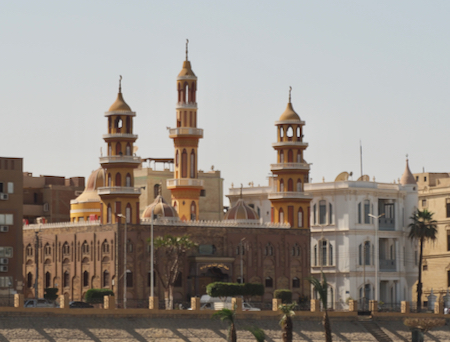
Minarets
|
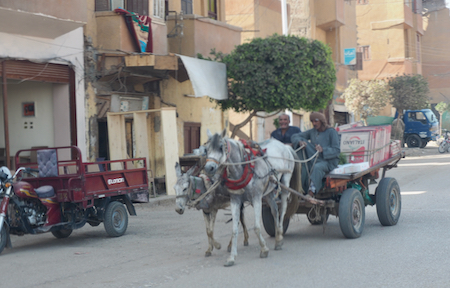
Local transport
|
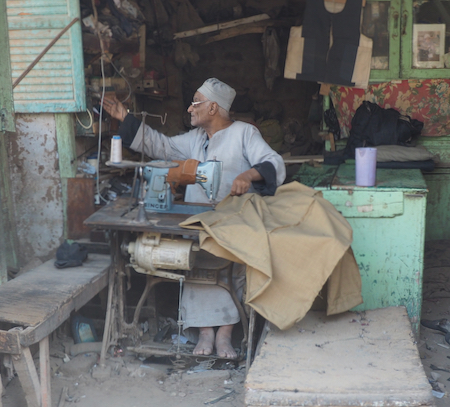
Newer Singer Sewing machine on an old base
|
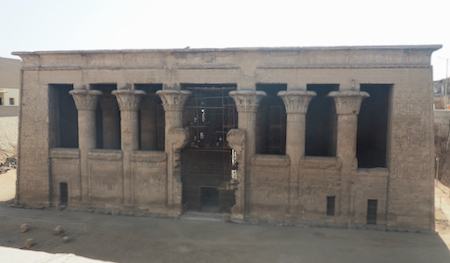
Temple of Khnum
The columns and their capitals, displayed below, are of many different designs and the color is exceptional. |
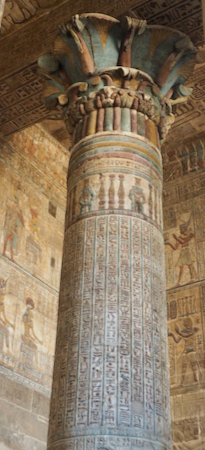
|
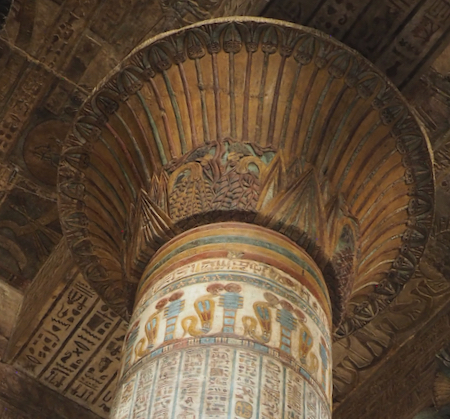
|
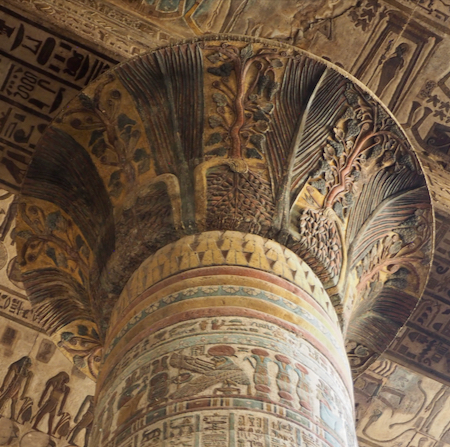
|
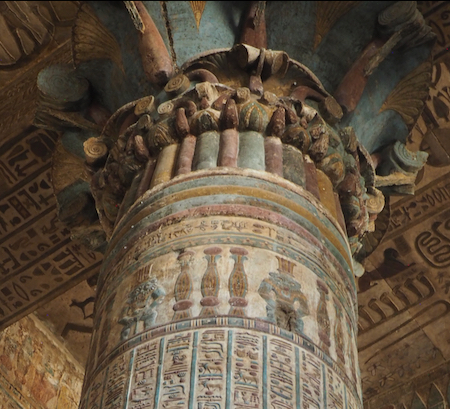
|

|
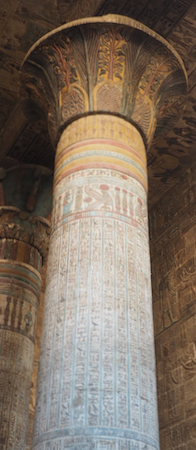
|
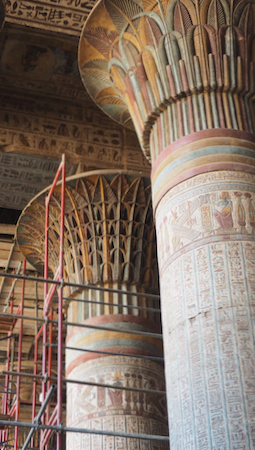
Scaffolding for restoration work
|
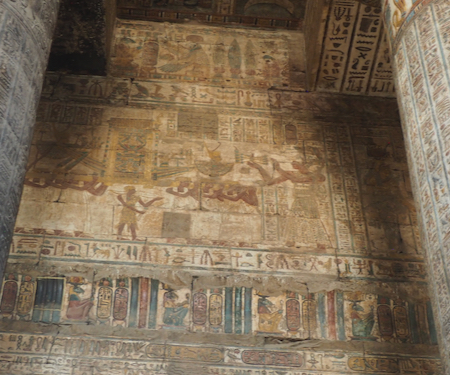
|
The United States Agency for International Development (USAID) partnered with the Takween Integrated Community Development Project to revitalize the Al-Qisariyya Market area in Esna between 2016 and 2020. The group walked through this area of upholstery fabric stores, fabric stores for hijabs, seamstresses, ironers, and others.
|
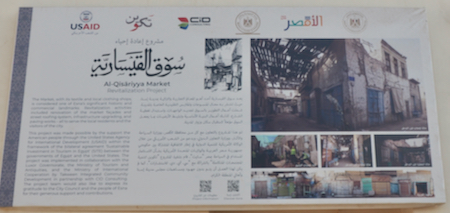

Al-Qisariyya Market Project
|

Bales of cotton |
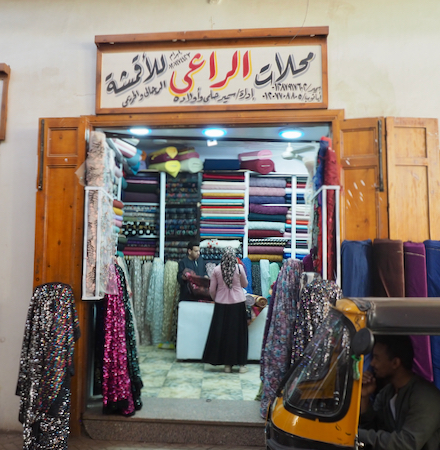
Fabric store
|
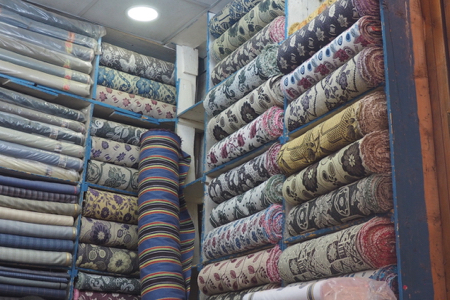
Colorful fabrics |
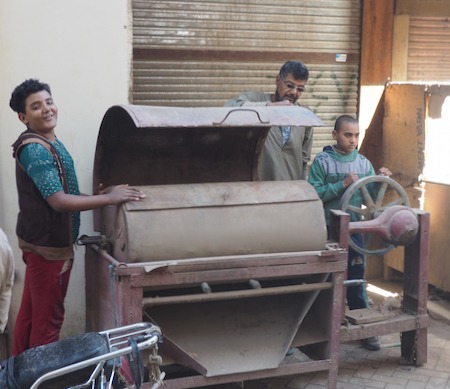
Peanut roaster - no longer functional
|
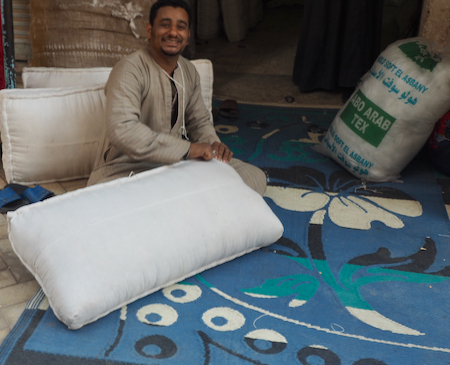
Making pillows
|
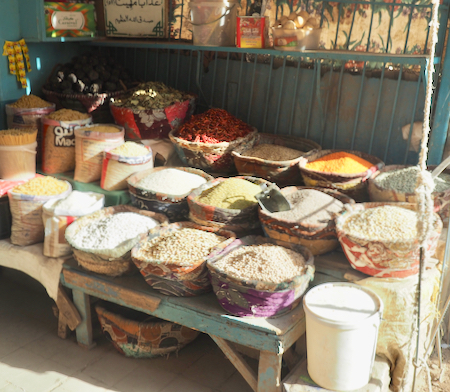
Nuts and spices
|
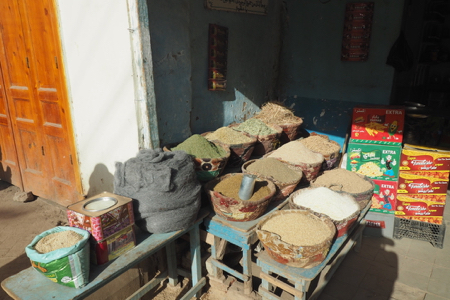
Spices
|

Description of a completed Haj |
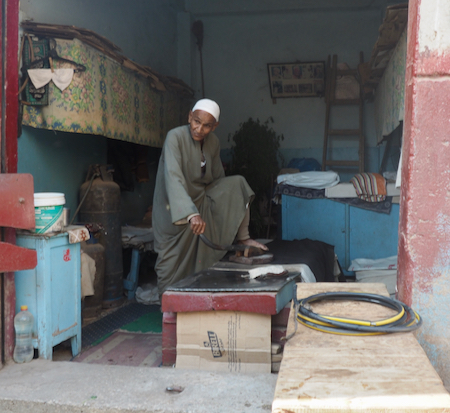
This is called foot ironing
|
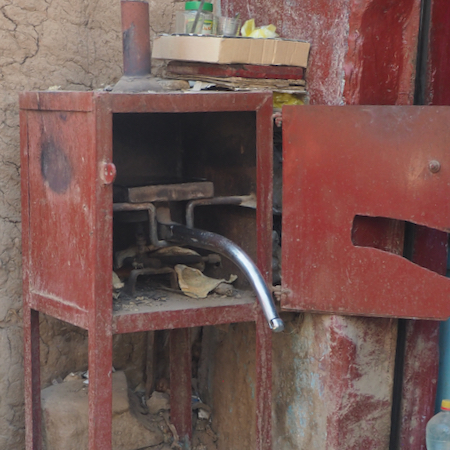
Heating the foot iron
|

Some houses in Esna have statues of vultures on the roof. They are spreading their wings to protect the house and people who live there.
|
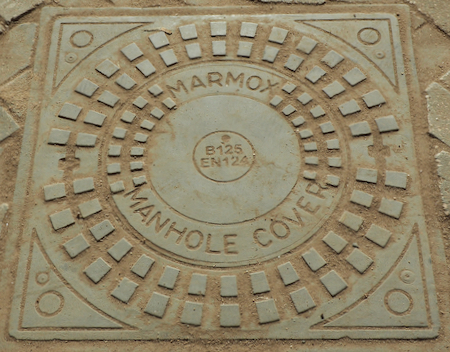
|

Pretty neat work
|
Tues., 3/8/22 - Esna to Luxor
Today we said good-bye to leisurely cruising on the Nile and took a motor coach ride to Luxor, a 75-minute ride through small farm villages and fields. The large field crops were of bananas and sugarcane and the small individual strips were of onions, garlic, alfalfa, and crops to feed the farmers’ families. Almost all of the work was being done by hand. We only saw tractors carrying loads of sugarcane, probably taking the carts to the sugar factory. Every village had speed bumps and police check points with armed guards.

Locks on the Nile at Esna
|
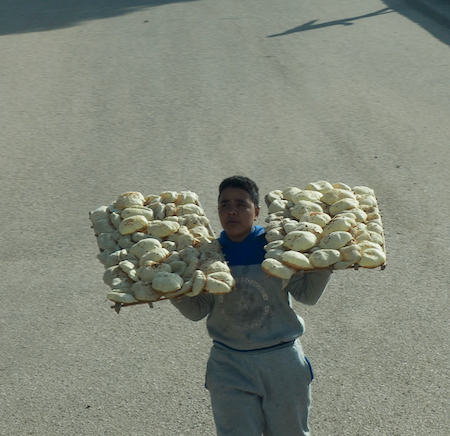
From bakery to store
|
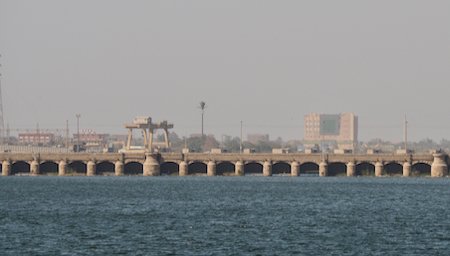
Barrage bridge, one of two across the Nile at Esna - a barrage bridge is a type of diversion dam which consists of gates that can be opened or closed to control the amount of water passing through |
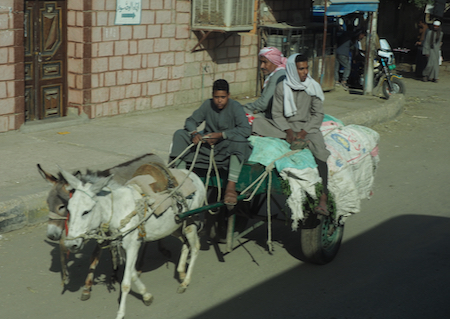
Mules, this time
|
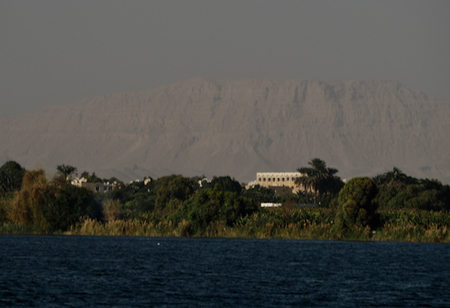
Notice the high bluffs (or cliffs) that line the Nile in many regions
|
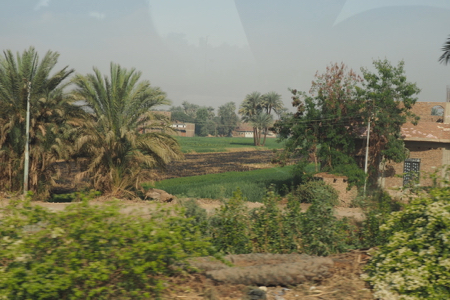
Burned off sugar cane field
|
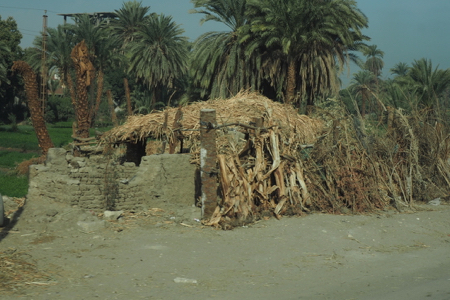
Creative living space
|

Airing the carpets
|

Sugar cane on it way to be refined
|



































